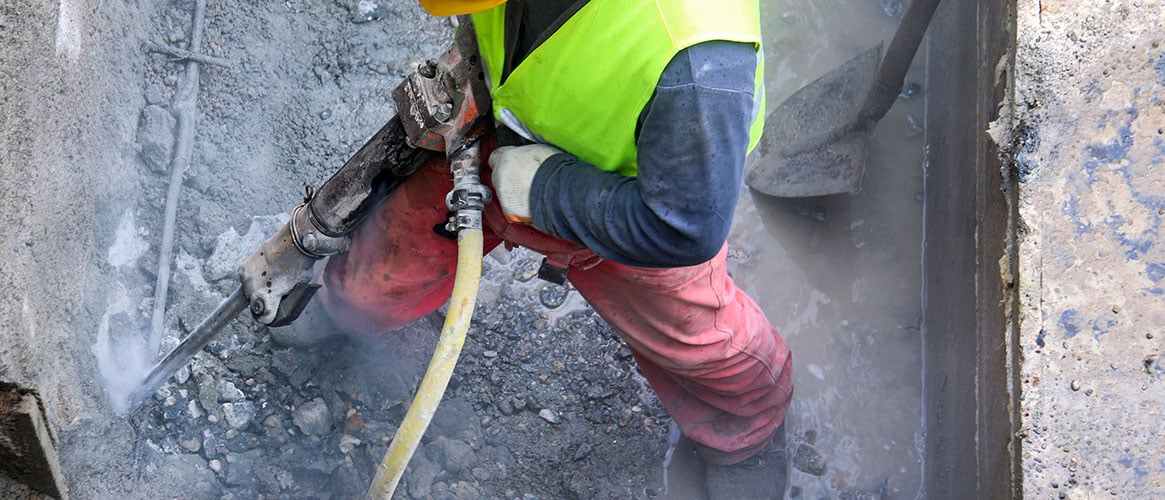What your employees need to know about working with crystalline silica
Silica is a natural substance frequently found in soil, concrete, stone, brick, and other similar materials. It becomes airborne when these materials are cut or during operations such as jackhammering on a sidewalk or street.
Construction workers or anyone that who cuts stone and other silica-containing materials are among those most at risk of breathing in the tiny particles. The good news is there are steps your employees can take to help minimize their risk.
What your employees need to do to control silica exposure
Engineering controls can be used as a way to prevent your employees from silica exposure. One example is the wet method. Use a concrete/masonry saw that provides water on the blade or use a water hose that essentially traps the dust and keeps it out of the air. Other engineering controls include:
- Local exhaust ventilation such as a vacuum system with a HEPA filter positioned right next to the work being done.
- Using isolation methods such as moving the operation away from other employees or moving employees away from the operation, or to conduct the work at a time of day when fewer people are on the jobsite.
- Using silica-free materials whenever possible. Silica-free stones, bricks, or concrete are available for purchase from stores and manufacturers.
In addition to the engineering controls, respirators can also be used, even if not required. If an employee wishes to wear a filtering face piece respirator—also referred to as an N95 disposable dust mask—let them know you have them at the worksite for their use. Before using an N95, review how to properly use them with your employees.
If control measures do not safely reduce silica exposure levels, respirators are required. Before using a respirator, employees must complete a medical evaluation form (and possibly an evaluation by a doctor), be trained in the use, maintenance, inspection, and care of the respirator, and be fit-tested with the correct respirator.
Also, silica can remain on clothes and create exposure for other people, including family members, if not handled correctly. Employees who work around silica should wash their hands and face, and change into clean clothes before leaving the worksite. Work clothing should be washed in hot water with a heavy-duty laundry detergent before being used again. When washing these clothes at home, always keep them separate from other family laundry.
What to cover at your safety meeting about crystalline silica
Remind your employees about the risk of silicosis, and that it is a serious, possibly fatal disease. Discuss the importance of your control measures and why they are necessary.
Also, include training on:
- How to use wet methods
- How to use local exhaust systems
- An explanation on any silica-free materials that you have purchased and where to use them
- Use of N95 respirators and a reminder that employees have the right to request one at any time
- Proper training when using respirators
The key to preventing silicosis is to minimize the amount of silica-containing dust in the air and to avoid breathing silica-containing dust. There is no cure for the disease once it develops, but it can be prevented by working together to minimize exposure.

